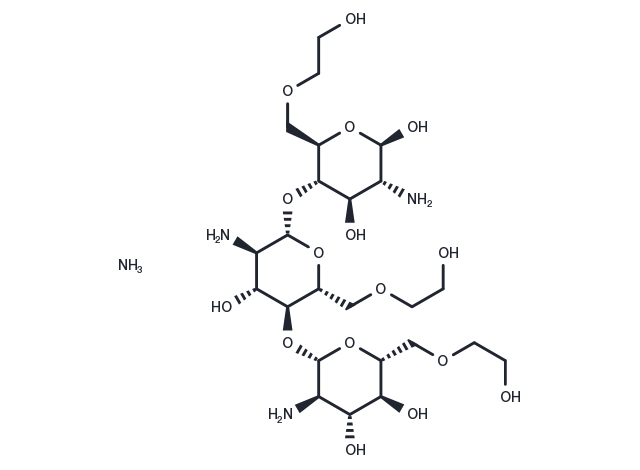Powder: -20°C for 3 years | In solvent: -80°C for 1 year


Glycol chitosan is a chitosan derivative with hydrophilic ethylene glycol branches. Glycol chitosan inhibits E. coli, S. aureus, and S. enteritidis growths (MICs: 4 μg/mL, 32 μg/mL, and <0.5 μg/mL). It enhances membrane permeability and leakage in Glycine max Harosoy 63W cells.

| Pack Size | Availability | Price/USD | Quantity |
|---|---|---|---|
| 100 mg | In stock | $ 40.00 |




| Description | Glycol chitosan is a chitosan derivative with hydrophilic ethylene glycol branches. Glycol chitosan inhibits E. coli, S. aureus, and S. enteritidis growths (MICs: 4 μg/mL, 32 μg/mL, and <0.5 μg/mL). It enhances membrane permeability and leakage in Glycine max Harosoy 63W cells. |
| Targets&IC50 | S. aureus: 32 μg/mL , E. coli:(MIC)4 μg/mL , S. enteritidis:<0.5 μg/mL |
| In vitro | The hydrophobic modification of Glycol chitosan has been validated, with derivatives such as Glycol chitosan with a 5β-cholanic acid moiety and deoxycholic acid-Glycol chitosan, capable of self-assembling into nanoparticles, demonstrating potential as carriers for hydrophobic drugs and genes [2]. Glycol chitosan can be covalently bonded with hydrophobic drugs to create amphiphilic compounds that form nanoparticles (NPs) useful in cell imaging and drug delivery. These derivatives are effectively utilized to transport antimicrobial and anticancer agents, employing either physical encapsulation or chemical conjugation methods. Glycol chitosan derivatives are advantageous for cell imaging and drug delivery due to their exceptional tumor-targeting capabilities stemming from the enhanced permeability and retention (EPR) effect, minimal cytotoxicity, chemical modifiability, high biocompatibility, and degradability [1]. |
| Molecular Weight | N/A |
| CAS No. | 123938-86-3 |
Powder: -20°C for 3 years | In solvent: -80°C for 1 year
H2O: 7.5 mg/mL, Sonication is recommended.
DMSO: 11.67 mg/mL, Sonication is recommended.
You can also refer to dose conversion for different animals. More
bottom
Please see Inhibitor Handling Instructions for more frequently ask questions. Topics include: how to prepare stock solutions, how to store products, and cautions on cell-based assays & animal experiments, etc.
Glycol chitosan 123938-86-3 Microbiology/Virology Antibacterial inhibit Inhibitor Bacterial inhibitor
